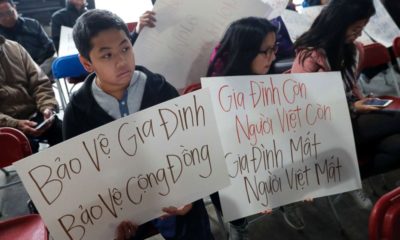Tuong Vu, US-Vietnam Research Center, University of Oregon
Many observers have commented that Vietnam’s new Defense White Paper is evasive on important issues and conveys little new thinking. Perhaps Vietnamese leaders are simply trying to hide their real thinking and to confuse their enemies by not revealing much. But this begs the question about the purpose of the document. To confuse their enemies, they would be better served by not issuing any White Paper at all. This White Paper confuses not only their enemies but also their friends.

An “anti-terrorism” drills that mobilized over 4000 thousands of people in Ho Chi Minh City on December 15th, 2019 (Source: “Phap luat TpHCM”)

An “anti-terrorism” drills on December 15th, 2019 (Source: “VNExpress”)

 Politics & Economy4 years ago
Politics & Economy4 years ago
 Politics & Economy2 years ago
Politics & Economy2 years ago
 After 19751 year ago
After 19751 year ago
 ARCHIVES5 years ago
ARCHIVES5 years ago
 Society & Culture5 years ago
Society & Culture5 years ago
 Politics & Economy4 years ago
Politics & Economy4 years ago
 Politics & Economy5 years ago
Politics & Economy5 years ago
 Vietnamese-America4 years ago
Vietnamese-America4 years ago









